Sorbello Stitch
part of the Palestrina Stitch Family

![]()
![]() This looped stitch is very similar to Squared Palestrina as it is a member of the Palestrina stitch family.
This looped stitch is very similar to Squared Palestrina as it is a member of the Palestrina stitch family.
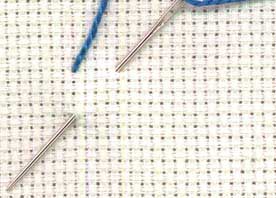
Sorbello stitch originates from the Italian village of Sorbello. This quick to work stitch can be used for straight and curved lines and individually.
As you work keep the tension loose so that each stitch covers a small square. In Italian embroideries this grid like aspect of the stitch has lead to it being used like many embroiderers today use cross stitch. Patterns and designs can be created because it can be worked on a grid.
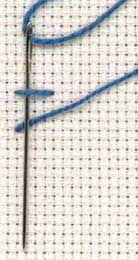
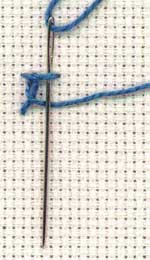
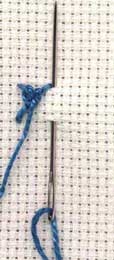
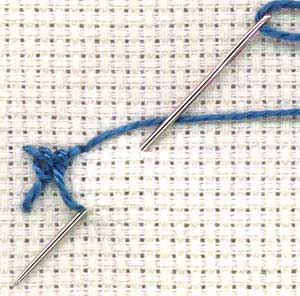
Work this stitch from left to right.
Bring the thread from the back of the fabric and make a horizontal straight stitch at the top of the square.
Taking the needle diagonally across the back of the fabric bring the thread through to the bottom left-hand corner.
Next, loop under the horizontal stitch and over the thread - as in the illustration.
Repeat this for a second time to form the knot.
Take the thread through the fabric at the bottom right-hand cornerbringing it out at the top left corner of the next stitch and repeat the process.
Palestrina Stitch Family.
There are a number of variations in Palestrina stitch such as Triple Palestrina, and Pearl stitch which is reversed Palestrina. Basque knot is also a variety of Palestrina. Sorbello Stitch is also an interesting variation of this stitch.
